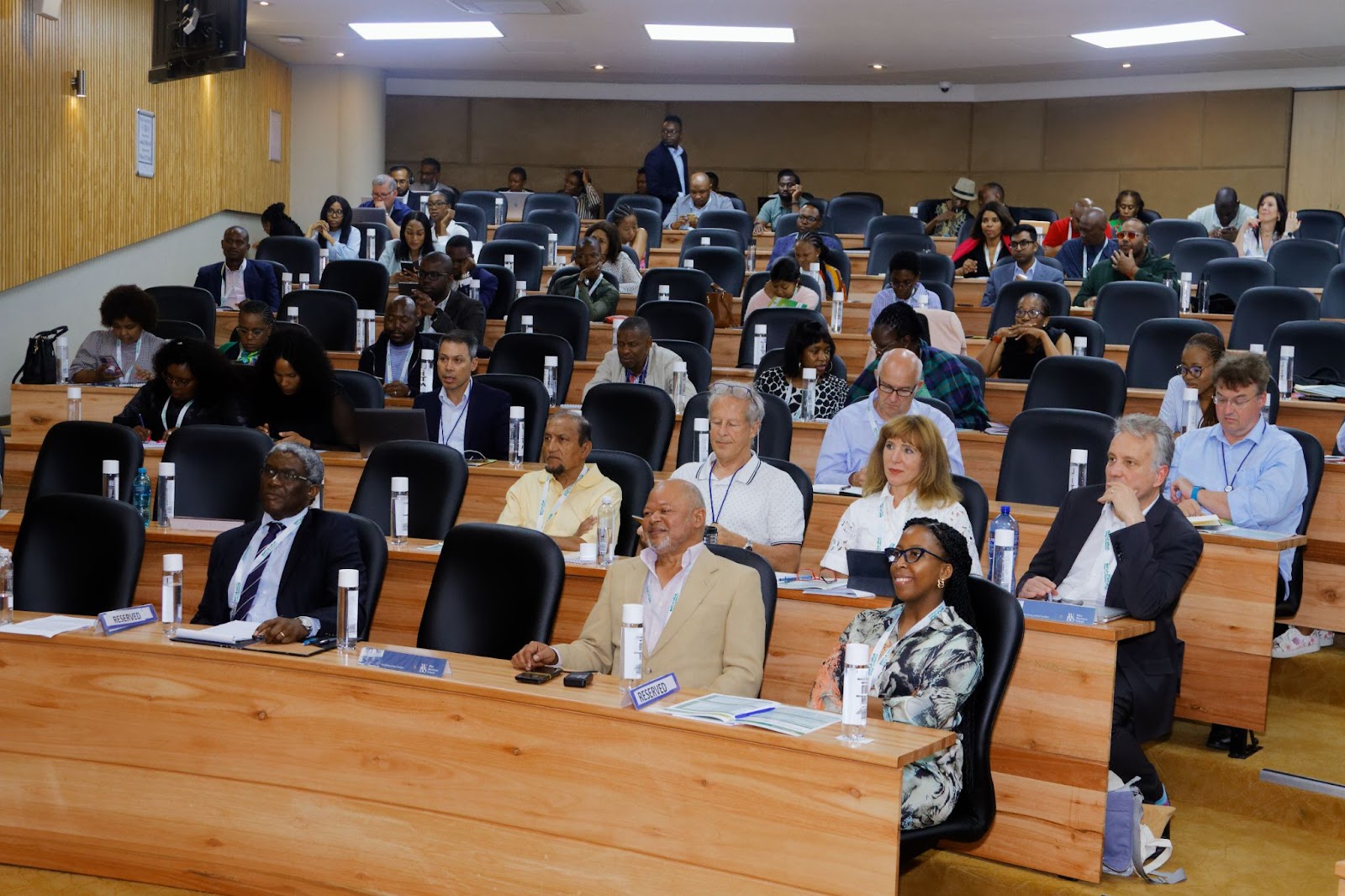Dr. Kgosientsho Ramakgopa, Minister of Electricity and Energy
South Africa’s energy sector faces existential challenges, from recurring load-shedding to structural inefficiencies in its energy infrastructure. At the Matla-Urja Energy Conference, Minister of Electricity and Energy, Kgosientsho Ramakgopa outlined a roadmap for overcoming these challenges.
The Minister spoke to the role of non-technical interventions, technical reforms and innovative financing. His address provided a comprehensive framework for addressing the energy crisis while ensuring sustainability and economic growth.
Minister Ramakgopa also framed the energy crisis as a critical obstacle to South Africa’s economic stability and growth. Load-shedding, driven by the declining performance of Eskom’s generation capacity, has cost the economy approximately 3 percentage points of GDP growth. The inefficiencies in energy logistics and financial constraints compound the problem, necessitating urgent and decisive interventions.
He noted the need for social compacts that include stakeholders from business, labour and community organisations to co-create solutions. Ramakgopa elaborated: “So the first is the non-technical determination. To resolve a problem of this magnitude we need the contribution of non-state actors. These non-state actors defined as business, labour and community organizations must ensure that they are included in the co-creation of the solution to the South African Energy challenge. It is this engagement that culminated in the adoption of the Energy Action Plan. A social compact so to speak.”
Minister Ramakgopa outlined the five key pillars of the Energy Action Plan:
1. Fixing Eskom: Eskom’s capacity, while theoretically sufficient at 51 GW, has been eroded over time, leaving only 25 GW reliably available. The plan prioritises resolving technical inefficiencies and addressing legacy issues stemming from state capture. Efforts include leveraging internal expertise, targeted interventions at underperforming power stations and mobilising external support through partnerships with business and labour.
2. Private sector investment: To reduce dependency on Eskom’s monopoly, the government has introduced legislative reforms under the Electricity Regulation Act. These amendments create an enabling environment for private investment, with approximately 66 GW of private sector-led projects already in the pipeline.
3. Public procurement of renewables: Expanding renewable energy capacity is another pillar of the plan. However, the minister acknowledged that transmission constraints limit access to areas with optimal wind and solar resources. Overcoming these constraints requires a 14,000-km expansion of the grid within a decade—a scale unprecedented in South Africa’s history.
4. Rooftop solar solutions: Drawing from Vietnam’s success, South Africa aims to incentivise rooftop solar adoption. Policy support and technological innovations will mitigate risks to grid stability posed by intermittent and non-dispatchable energy sources.
5. Transmission Reform: Recognising the strategic importance of the grid, the plan includes establishing the National Transmission Company of South Africa (NTCSA). This entity will lead efforts to expand and modernise transmission infrastructure, supported by private sector participation through independent transmission projects.
Financing and policy reforms
The minister emphasised the need for innovative financing solutions to address the energy sector’s capital-intensive demands. Public sector finances alone cannot support the required investment of approximately R390 billion for grid expansion. To attract private sector participation, the government is working with global financial institutions to develop credit-enhancing instruments that reduce risk and incentivise investment.
On the policy front, reforms focus on redefining the energy landscape. Amendments to regulations enable private sector-to-private sector agreements, bypassing traditional government involvement. The government is also developing granular regulations to provide clarity and certainty for investors.
Addressing the energy trilemma
South Africa’s energy strategy grapples with the energy trilemma: ensuring access, affordability and security while pursuing sustainability. Minister Ramakgopa acknowledged that balancing these elements requires difficult trade-offs, particularly as the country seeks to decarbonise its economy.
The decommissioning of coal plants, critical to meeting climate targets, poses significant socio-economic challenges. Coal-dependent communities face potential job losses, while regions reliant on coal-fired plants risk economic decline. The minister stressed the importance of a just transition that safeguards livelihoods and integrates affected communities into the new energy economy.
Unlocking opportunities
Despite the challenges, the minister highlighted opportunities to position South Africa as a leader in renewable energy and green hydrogen. With abundant solar and wind resources, combined with advanced mining and industrial capabilities, South Africa has the potential to become a hub for green energy production and export. The Northern Cape, with its high irradiation levels and available land, is particularly well-suited for large-scale solar projects and green hydrogen initiatives.
The minister also pointed to the role of the private sector in driving innovation and investment. By fostering partnerships and leveraging South Africa’s youthful workforce, the country can build a skilled labour pool equipped to manage and expand the energy infrastructure.
 Delegates at the Matla-Urja Energy Conference, Wits Business School
Delegates at the Matla-Urja Energy Conference, Wits Business School
The road ahead
Minister Ramakgopa concluded with a call for alignment and coordination across all levels of government, stakeholders, and international partners. Leadership, he noted, is critical in navigating the complexities of energy reform and ensuring the effective implementation of the Energy Action Plan.
South Africa’s energy future hinges on the success of these interventions. The focus on transmission reform, renewable energy integration, and private sector participation signals a shift toward a more inclusive and sustainable energy landscape. However, addressing deep-seated structural challenges, such as municipal debt and distribution inefficiencies, remains critical to achieving long-term energy security.